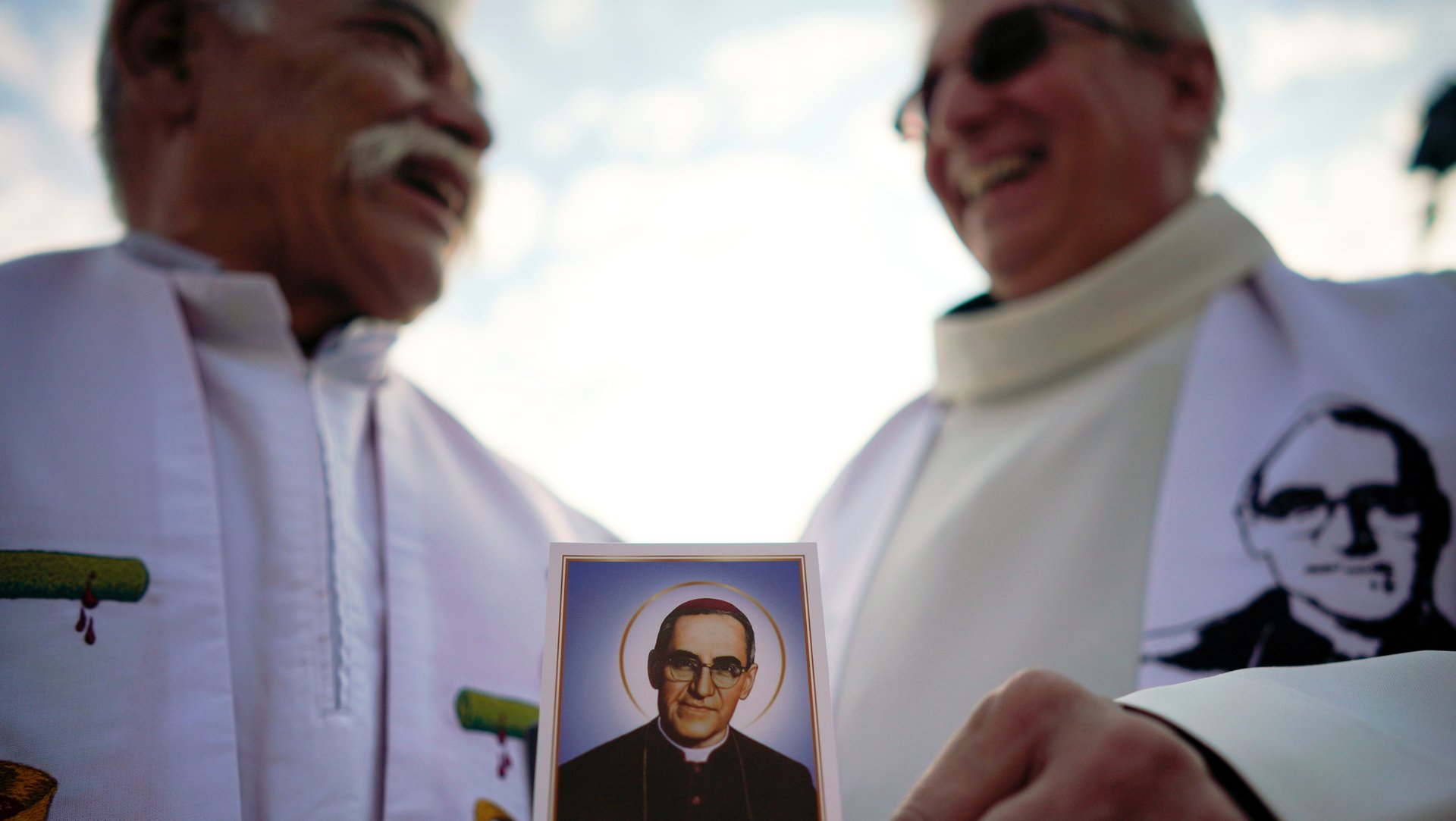Pope Francis names two controversial saints: Archbishop Oscar Romero and Pope Paul VI
Pope Francis named seven new saints during Mass in St. Peter’s Square in the Vatican on Sunday (Oct. 14), including two of the Catholic Church’s most controversial and influential figures of the 20th century: Pope Paul VI, and the martyred Salvadoran archbishop Oscar Romero.


Pope Francis named seven new saints during Mass in St. Peter’s Square in the Vatican on Sunday (Oct. 14), including two of the Catholic Church’s most controversial and influential figures of the 20th century: Pope Paul VI, and the martyred Salvadoran archbishop Oscar Romero.
Seventy thousand people attended the ceremony, during which Francis wore the blood-stained cincture (a belt-like liturgical vestment) that Romero wore when he was killed in 1980, the New York Times reported.
Romero, a popular figure in his native El Salvador, was killed by a well-connected right-wing hit squad while holding Sunday mass. To the chagrin of the ruling regime, Romero criticized government oppression and preached social equality. As Carlos Dada, a Salvadoran journalist, wrote for The New Yorker (paywall) during Romero’s beatification in 2015:
When I was a child, in the late seventies, Monseñor Romero was an omnipresent figure: on the front pages of all the newspapers, on TV and radio, in every adult conversation. Every Sunday, when Romero celebrated Mass in the cathedral, Salvadorans who could not attend tuned in to the radio station that broadcast his homilies. From the pulpit, Romero lectured politicians, soldiers, popular organizations, and guerrillas alike; he urged them to renounce violence and he demanded social justice. He reminded the Salvadoran élites that peace could not be achieved in an unequal society. He accused them of maintaining “insulting” privileges through repression. He usually read detailed reports about people who had been killed or disappeared, and on massacres committed by the Army.
He’s said to have had a big influence on Pope Francis, while his predecessors reportedly viewed him as too subversive, and leaning too far left.
Pope Paul VI was an Italian cardinal elected to popehood in 1963, who died in 1978. He presided over Vatican II, a council which brought the church into the modern era, and implemented decisions such as the shift from celebrating Mass in Latin to local languages. He was also the first pope in modern times to travel outside of Italy, starting a tradition followed by his predecessors who’d visit many corners of the world. He also penned an encyclical, a document that spells out Catholic doctrine, which opposed artificial contraception, a contentious position within the Church at the time, that is even more so today.